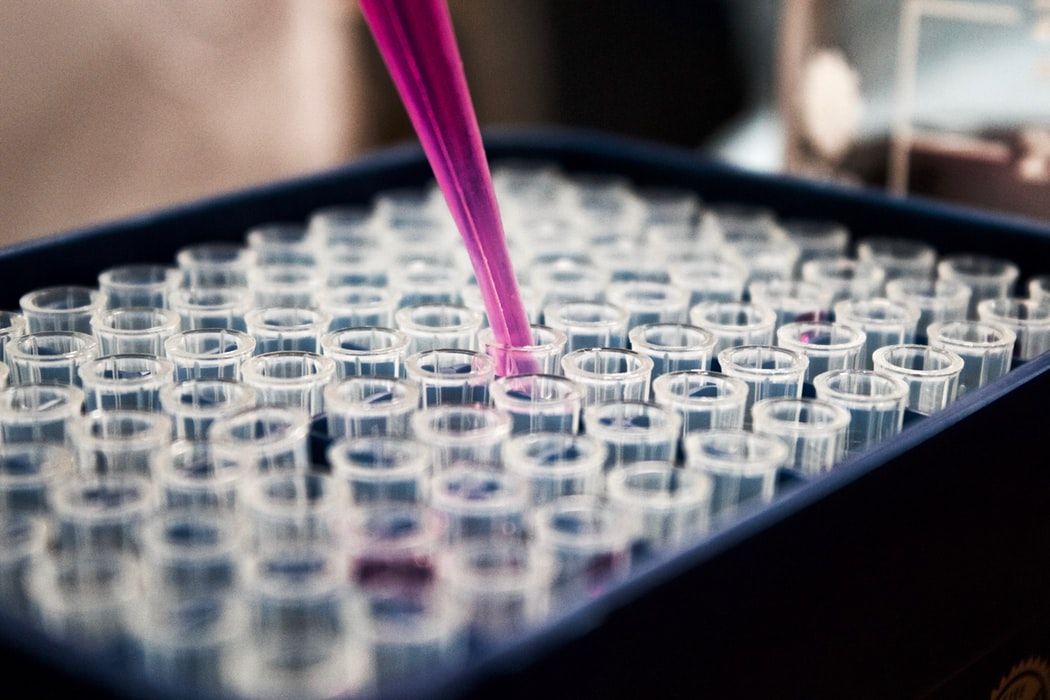Smallest Possible Enzyme Sheds Light on the Origins of Life
Researchers at Tel Aviv University have created the smallest enzyme possible – a single amino acid in size. The group, led by Professor Ehud Gazit, used the amino acid phenylalanine to split a molecule of nitrophenyl acetate in two. These findings show promise for biotechnology – where the synthesis of new chemicals is often reliant on harnessing enzymes. The research may also shed light on how life on Earth may have begun.
Phenylalanine is one of the nine amino acids necessary to sustain human life. In the presence of zinc, phenylalanine molecules can assemble themselves into needle-like crystals. Each crystal contains thousands of individual amino acids. Other molecules, such as nitrophenyl acetate, are adsorbed onto the surface of these crystals. Once there, they are altered and undergo chemical reactions. The reaction facilitated by these crystals involves the breakdown of a large molecule into two parts, a process termed hydrolysis. The process is the foundation of many chemical reactions important to life.
The research may also shed light on how life on Earth may have begun
Prof. Gazit’s group used x-ray crystallography to observe the formation of these crystals. The paper, published in Nature Catalysis, lays the groundwork for designing smaller and more efficient catalysts. Importantly, the group has shown that this artificial enzyme is better at promoting hydrolysis than other, naturally occurring, enzymes.
Strip back the layers of complexity and all life is, and you’re left with enzymes. These biological molecules replicate our DNA, build up our proteins and break down carbohydrates. Enzymes are immensely complicated structures. They are generally made up of hundreds, if not thousands, of amino acids in three-dimensional structures. The importance of these structures is highlighted by conditions in which they malfunction. Phenylketonuria, or PKU, is a condition resulting from the misfolding of a single enzyme. The enzyme phenylalanine hydroxylase has a role in digesting protein. Without it, toxins build up in the body and if not caught soon after birth, PKU can cause permeant damage or even death.
These biological molecules replicate our DNA, build up our proteins and break down carbohydrates
The laws of thermodynamics govern what chemical reactions can and can’t occur in our universe. If a reaction happens anywhere then it is theoretically possible everywhere. This means that every reaction taking place inside your body could spontaneously occur without enzymes. However, there is a catch. Haemoglobin is a red pigment which carries oxygen in our blood. Without enzymes, the reactions necessary to create haemoglobin would take 2.3 billion years – around half the age of the Earth. Enzymes exist to speed up chemical reactions, taking reaction times down from billions of years to mere milliseconds.
Humans have unknowingly harnessed the power of enzymes in technology for thousands of years. We use them to help turn milk into yoghurt and change the colour of our clothes. In modern times, they are an important part of drug synthesis and heavily used in research. 3.5 billion years of evolution has given naturally occurring enzymes an edge over even our most advanced technology. Artificial enzymes are often clumsy and inefficient compared to those produced in our bodies. Yet the work done by Prof. Gazit’s group has shown that even extremely simple artificial enzymes can outperform their naturally occurring equivalents. Paired with advances in computer modelling, this new research could open a whole new avenue of artificial enzyme discovery.
Artificial enzymes are often clumsy and inefficient compared to those produced in our bodies
The problem with most theories of life’s origin has always been a complexity. Models of evolution explain how incremental changes give rise to new species. Laboratory experiments show evolution occurring in real-time as microbes develop tolerance to heat, pressure or antibiotics. But how can evolution get kick-started when there is no life to begin with? How can simple chemicals gain the complexity required to self-replicate and pass traits on to the next generation?
The ability of single amino acids to assemble into increasingly complex structures offers an insight into how early enzymes may have developed. Already, studies have shown how amino and nucleic acids, the core building blocks of life, can be created by volcanic activity. The work of Prof. Gazit’s group shows that complexity can arise from these relatively simple molecules.

Comments